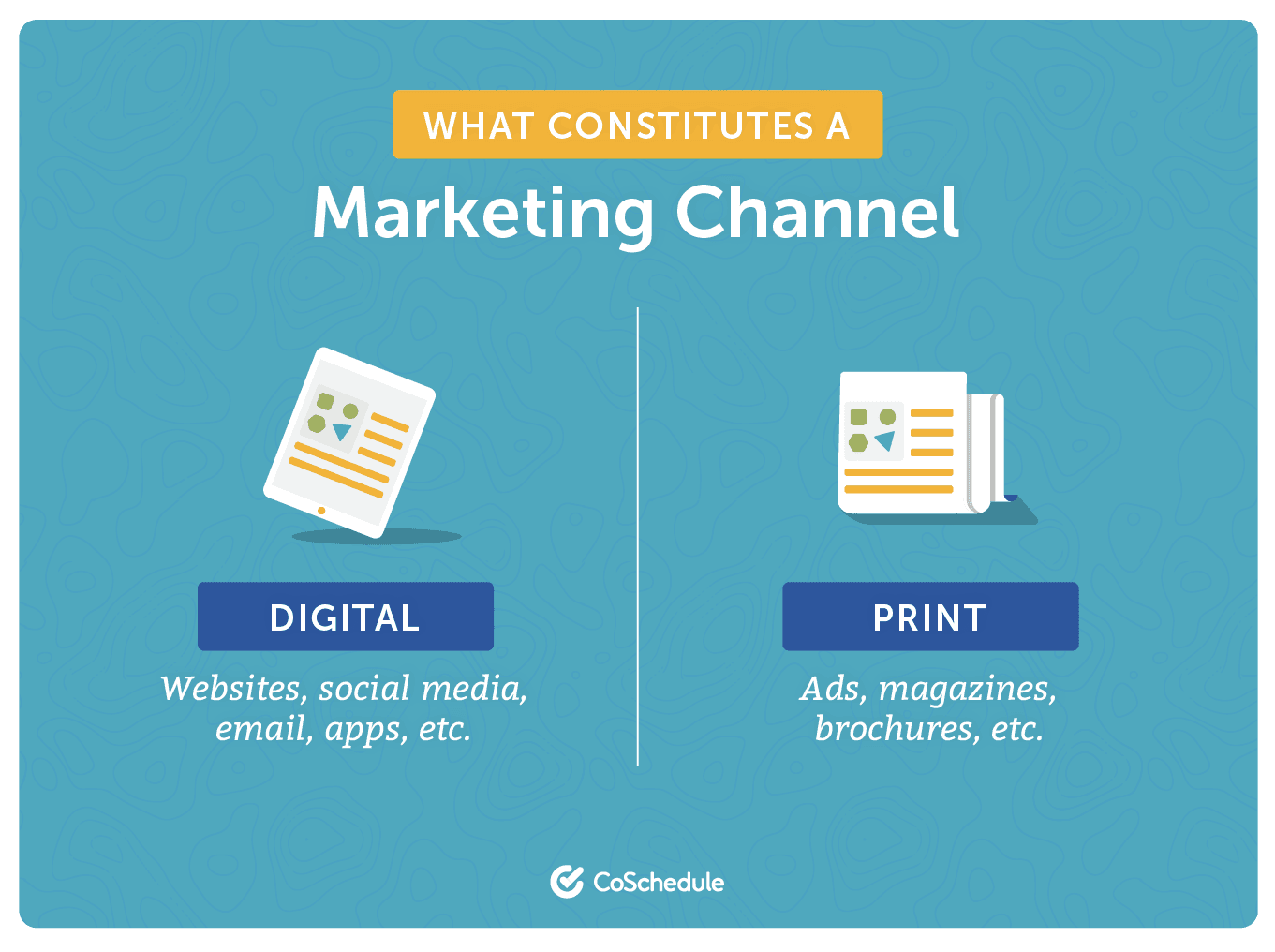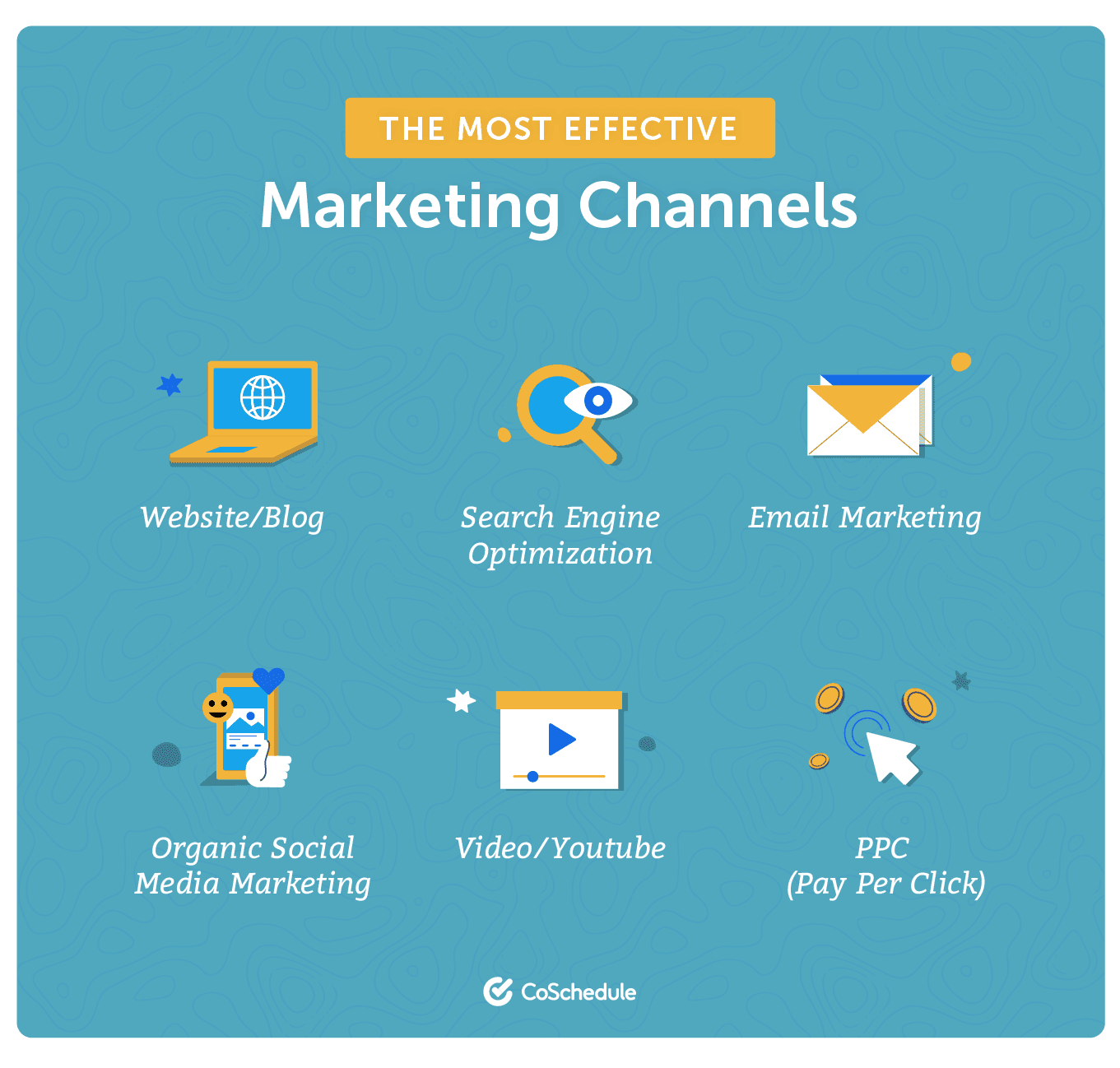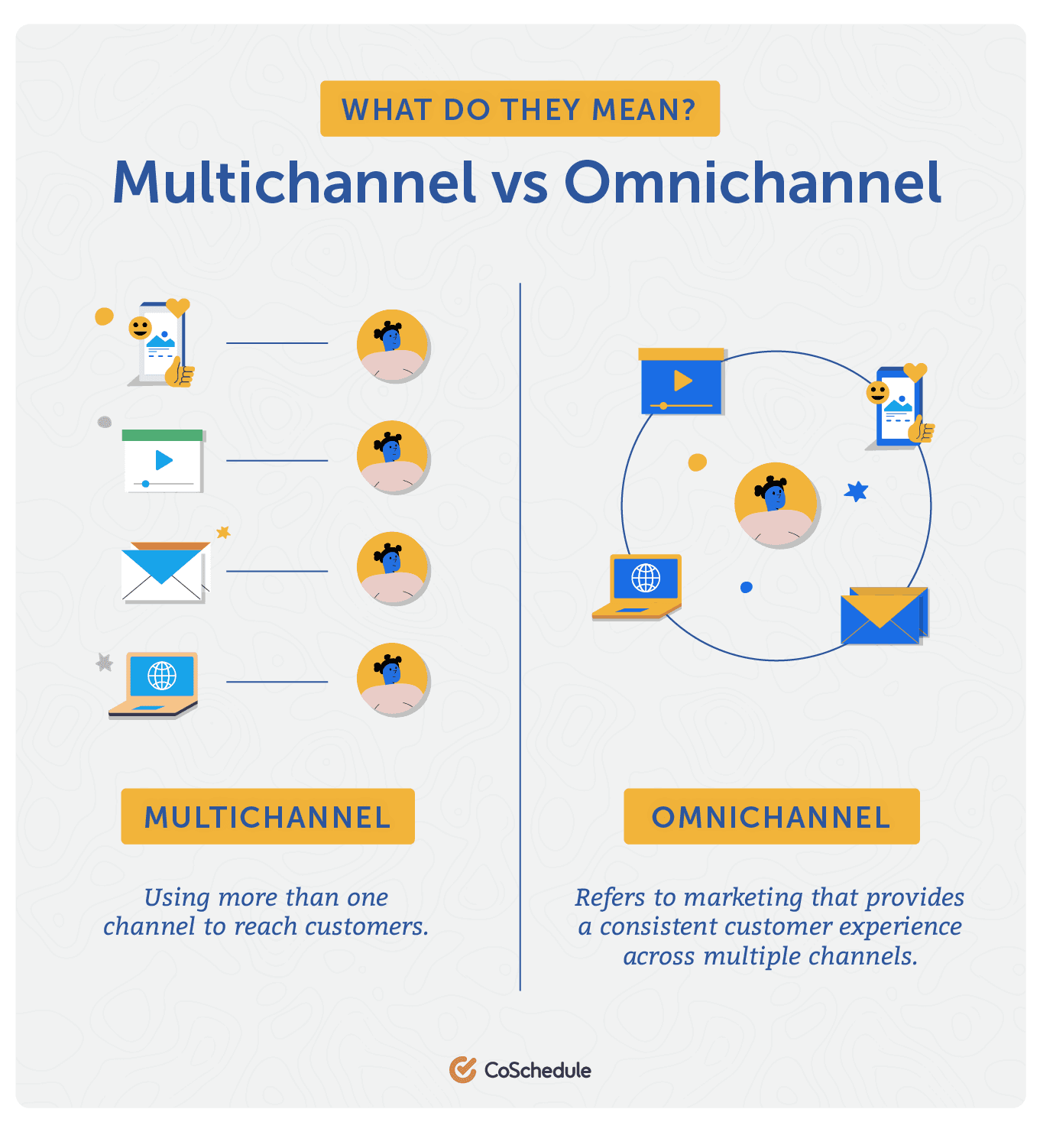Marketers can reach consumers in more ways than ever. With so many different options, it’s easy to get overwhelmed. You want to make sure you spend your time and money on the most impactful channels and tactics. But, without knowledge of what will work best, it’s easy to let fear stop you from starting.
Here’s some good news, though: selecting marketing channels doesn’t have to be rocket science.
You might hear a lot of chatter about emerging technologies like AI and chatbots. But, unless you’re a very advanced marketer or at a large company, those types of tactics are likely out of your reach. That’s okay, though, because you don’t need the flashiest new thing to succeed.
What’s important isn’t focusing on every new channel. It’s focusing on the right channels to maximize the growth of your business. And in this section, you’ll discover where you should be directing your effort and attention to make the most impact.
Table of Contents:
- What Constitutes a Marketing Channel?
- What Are Examples of Marketing Channels?
- Which Channels Should Marketers Focus On?
- Multichannel vs. Omnichannel: What Do Either of These Terms Mean?
- Determining the Marketing Channels You’ll Use
- How to Evaluate the Effectiveness of a Given Channel
What Constitutes a Marketing Channel?
A marketing channel can mean any method or platform that’s used to market a product or service to consumers. The primary goal is to turn over ownership of the product or service from production to consumption. Channels like this could include:
- Social media channels: Instagram, Facebook, LinkedIn, Twitter, etc.
- Print marketing channels: Ads, magazines, brochures, etc.
- Email marketing channels: Email signatures, banners, newsletters, etc.
- Websites: Your own website
- Referral channels: Directories, websites that reference your page/company, etc.
- SEO: Appropriate title tags, meta descriptions, keywords, etc.
- Word of mouth: Spreading the word about who your company is and what you have to offer.
- Pay-per-click (PPC) marketing

What Are Examples of Marketing Channels
First, take a look at this comprehensive list of potential platforms and means of consumer communication:
- Affiliate marketing
- Amazon storefront
- Apps
- Blogs
- Websites
- Social media networks
- Events
- TV Commercials
- Online video
- Microsites
- Mobile ads
- Social media ads
- Press releases
- QR codes
- Chatbots
- Webinars
- Print ads
- In-store signage
- Direct sales
- Radio ads
- Point of sale displays
- Print catalogs
- Contests
- SMS marketing
- Near-Field Communications (NFC)
- PR events
- Conference booths
- SEO
- PPC
- Mobile advertising
- RFID tags
That’s a long list, and it barely scratches the surface. Some of these could even be broken down more granularly (for example, there are lots of different social media networks, and each could be considered its own channel).
Which Ones Should You Focus On?
If that’s enough to make your head spin, you’re not alone. But, it illustrates how many mediums, formats, and channels exist, all competing for attention. Fortunately, you don’t need to pay attention to every channel possible. In fact, trying to do so will almost certainly result in failure. It’s better to master a few, than to spread yourself too thin.
These recommendations should not be considered firm requirements for marketing success. However, these channels are generally regarded as the most effective, for the most companies.

Website / Blog
A website is table stakes for any business. This ties into the next item on this list.
Actionable Reading:
Search Engine Optimization
Where does most website traffic come from? According to SEO software provider Brightedge, a whopping 51%. Plus, 82% of marketers view their SEO efforts as being effective. This squares with CoSchedule research that found traffic is a top KPI for marketers (the second most common priority, behind lead generation).
Actionable Reading:
Email Marketing
The marketing landscape changes frequently, and email is no exception. What has held steady, however, is the reliability and effectiveness of email marketing. According to Campaign Monitor, email drives $38 in revenue for every dollar spent. Other sources report similar findings (typically between 3,800 and 4,400% ROI). That is impossible to ignore.
Actionable Reading:
Organic Social Media Marketing
Staying on top of social media trends is tough. Plus, with organic reach declining on platforms like Facebook, it can be challenging to succeed. However, social media still offers tons of brand value for smart companies to capitalize on.
However, it’s important to approach social media with a smart strategy, in addition to a disciplined approach to channel selection. Choosing a small number of networks to master often produces better results than maintaining a presence on every platform.
Actionable Reading:
Video / YouTube
Did you know YouTube is considered the world’s second largest search engine? When you think about it, it’s easy to see why. It’s often easier to watch a video to learn how to perform a task, than to read an extensive piece of content on the same topic.
Actionable Reading:
Consider this: LEGO is YouTube’s most popular brand. It makes sense, though, because people want to know how to do fun things with those classic colored plastic blocks. In fact, according to Google, how-to searches on the platform have been increasing by 70%.
So, if your company can benefit from creating clear how-to content, YouTube is a channel that should be considered.
PPC
Organic traffic is great for building an audience. However, paid advertising works well (perhaps better, in some cases) for driving direct conversions. That’s because consumers clicking ads are often ready to make a purchase. According to CleverClicks, PPC converts 50% more traffic than organic search. A complete search marketing strategy should include both organic and paid tactics.
Actionable Reading:
- What is PPC? Pay-Per-Click Marketing Explained (Portent)
- Pay-Per-Click Marketing: Using PPC to Build Your Business (WordStream)
- The Ultimate Guide to PPC Marketing (PPC Hero)
Multichannel vs. Omnichannel: What Do Either of These Terms Mean?
Spend time in the marketing blogosphere and you may encounter the words “multichannel” and “omnichannel.” You might also scratch your head and wonder what either one of these terms mean. Here are quick definitions:
- Multi-channel Marketing: Using more than one channel to reach customers.
- Omnichannel Marketing: Refers to marketing that provides a consistent customer experience across multiple channels.

Is it important to understand these terms? To be blunt, not necessarily. If your brand standards are enforced across all your chosen channels, and you’re using the right mediums to reach your customers, that is what matters most.
Determining the Channels You’ll Utilize
None of this needs to be set in stone. You can always add or subtract channels from your strategy in the future. For now, determine the following:
- Which channels you’re currently using.
- Which channels you’ll add to your strategy.
- Which channels you’ll consider putting on pause.
How to Evaluate the Effectiveness of a Given Channel
In a word: measurement. This will be covered in a later chapter in this guide, but it’s worth briefly touching on this point. If a channel is not producing a measurable benefit, it’s time to recalibrate and reconsider whether it deserves a place in your strategy.
That’s a Wrap
There’s everything you need to know about marketing channels.
